PRIMARY CONTACT
Dr. Mary-Irene Parker opens her home
Dr. Jennifer Ward collaborates with the Pimicikamak Okimawin Community
IDRR joins WHO’s World Rehabilitation Alliance


Dr. Mary-Irene Parker opens her home
Dr. Jennifer Ward collaborates with the Pimicikamak Okimawin Community
IDRR joins WHO’s World Rehabilitation Alliance

a new


Now is the time to place your order.
Effective May 1, 2023* all Elite tables, upholstery and parts will increase in price. Don’t wait. Act now.

16
The Institute for Disability and Rehabilitation Research becomes a founding member of WHO’s World Rehabilitation Alliance
20 Board work, a gratifying experience
24
Responding to the opioid crisis: The role of chiropractic in opioid use reduction
25
Share your Insight!
26
World Spine Care works with CMCC alumna Dr. Jennifer Ward to collaborate with the Pimicikamak Okimawin community
28
World Spine Care held as an example for collaborative study model within an Indigenous community
30 In Memoriam
31 Passages
46 Donations
Go green: You can reduce your carbon footprint and read Primary Contact in a digital format instead of receiving a paper copy. Email us at communications@ cmcc.ca and we’ll make the switch for you.

In the last issue of Primary Contact, I mentioned that our 2022-25 CMCC Strategic Plan contains elements that address our desire to expand “experiential learning” in our curriculum. But what does that term mean and how are we changing? Simply put, experiential learning is the process of learning through experience; i.e., learning by doing. Those of us who were
trained in the past learned in a passive setting in which knowledge was delivered primarily through lectures, supplemented by some laboratories. Eventually, we got into the fourth year and were immersed in the clinic setting and struggled to make a shift from passive to active learning. Over the years, CMCC’s curriculum has added greater opportunities for clinical observations and more hours of laboratory instruction, but even today, our pre-clinic (Years I-III)

curriculum is about 45% lecturebased. Adult learning is best when it involves learning in a setting or format most relevant to eventual professional application. We are striving to shift from passive learning to active learning in which there is less dependence on traditional lectures and more on clinical application, problem solving, small group interactions and handson experiences.
One of the effective ways to facilitate experiential learning is by using standardized patients (SPs), also known as simulated or trained patients. These are persons meticulously trained to accurately portray clinical disorders. For example, an SP can be trained to provide the detailed history and emulate the complex physical, orthopaedic and neurologic signs of an acute lumbar disc disorder, a concussion, a malignancy, and so forth. By using SPs, pre-clinic learners can become comfortable and proficient in dealing with serious clinical problems in a realistic setting long before they start their clinical internship. SPs not only provide a safe way for students to practice history taking, perform a clinical examination and formulate a differential diagnosis
and management plan, but also can assist students in learning vital communication skills, building confidence and engaging with a wide variety of patient types.
As we envision enlarging the pool of SPs to be used in the curriculum, we hope that gradually, material delivered only via lecture today can shift to SP interactions. Imagine the educational difference between watching PowerPoint® presentations on the clinical presentation of multiple sclerosis (MS) or transient ischemic attacks (TIAs), and interacting with MS or TIA standardized patients, followed by debriefings of those sessions with a faculty member.
These SP sessions inevitably lead to students pursuing further knowledge about these conditions or the clinical evaluation of the presenting symptoms and building enduring learning, not just memorization of facts to pass an examination.
To be most effective, a standardized patient program needs a facility to support this type of learning. That’s why our strategic plan addresses space optimization and the anticipated development of a
dedicated Learning and Assessment Centre. This type of Centre would have multiple exam rooms with sophisticated digital recording devices and supportive task training equipment. Recently, through the generosity of the CMCC Governors’ Club, we implemented the use of auscultation training devices that fit over a standard stethoscope and can deliver murmurs, abnormal lung sounds, etc., when a student is examining the SP.
It's my hope that in the next edition of Primary Contact I will be able to provide further information on how our plans for a Learning and Assessment Centre are progressing.
Chiropractic education should provide vast opportunities for experiential learning, beginning in the first year and culminating with a broad clinical experience. Our 2022-25 Strategic Plan addresses these opportunities and will further advance CMCC’s ability to meet its mission to deliver world class chiropractic education, research and patient care.

David Wickes, DC, MA
“Education is the most powerful weapon which you can use to change the world."
Nelson Mandela
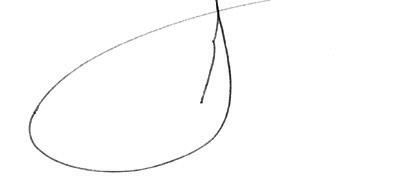
Over the decades, the Board of Governors has occasionally held the CMCC annual general meeting outside of Toronto. These meetings have taken place in almost all of the provinces. This year’s AGM in October was held in the beautiful city of Montreal. Planned to coincide with the Canadian Chiropractic Association's National Conference, it allowed our board and members of the CMCC administrative team to interact with the CCA board and its administrative team on a level not often available to us. We hope to build on this collegial interaction in the future. In addition, many chiropractors in attendance had an opportunity to mingle and engage with our Board. This included some of my classmates, which was a special treat. It seemed like it was only yesterday that we were at CMCC together, fretting and slogging through the magnitude of learning material that was provided.
At the AGM, we said goodbye to two of our longstanding Board members who served with distinction and vigor. Drs. Rahim Karim and Sunyatta Guild were fabulous governors and will be missed. I wish them well as I know they will continue to positively represent our profession.
The Governance Committee is working toward a renewed Board member recruitment process which will provide the expertise and competencies that are most

needed to help those who would like to apply know if they are a good fit at any given time. You may have noticed the article written in the last Primary Contact by Dr. Lori Darroch, a previous CMCC Board Chair, about her experience and the benefits she gained from being a Board member. In this issue, Dr. Sarah Williams shares her story. We hope the continuation of this series will give you a wide perspective on whether this may be a position for which you would like to apply.
As noted in my previous message, CMCC is engaged in developing the longstanding membership program into a new and exciting mechanism providing alumni and friends robust opportunities to be involved with CMCC. The Board and its Advancement Committee look forward to the introduction of the new initiative and to welcoming you to join us as we move forward.
One of the Board’s strategic objectives is to ensure that CMCC gives importance and attention to the student learning experience. Some of the student programs that have emerged and grown since the COVID-19 experience are “Empower Me” and “Conversation.” These student health programs have been invaluable and effective in helping our students manage their mental health. The programs have been easily accessible and have allowed all students to have quick and productive intervention when they most needed help. The Board is very pleased to see these programs available and used by our students.
Another of the Board’s strategic objectives is for CMCC to continue to move towards digital transformation. Work is well under way, the leadership of the Information
Technology division, to achieve this objective.
A responsibility of the Board is to identify areas to allow expansion of current initiatives as well as space available for new initiatives all within our existing structure. CMCC has recently undergone a space planning study, one outcome of which is to support the strategic objectives surrounding creating a Learning and Assessment Centre. The concept of this Centre has truly inspired the Board and we have given it our full support, foreseeing wonderful opportunities that it will provide to the academic program.
We are so proud that CMCC faculty continue to elevate chiropractic and CMCC. They continue to publish extensively in peer-reviewed journals and present at professional and scientific conferences, receiving many accolades and awards. With role models such as this, our students will aspire to even greater heights as they move through their academic and subsequent careers.
Now well into my second year as Chair of the fantastic CMCC Board of Governors, I continue to embrace and enjoy all aspects of the position. CMCC is truly a wonderful institution full of amazing people doing incredible things! In short, CMCC is superbly placed with a solid strategic plan and clear path forward, striving for excellence as we educate the chiropractic leaders of the future.
Gregory Woolfrey, DCTo contact any member of the Board, please email board@cmcc.ca.
CMCC is a national educational institution that seeks to maintain a Board with a strategic combination of personal attributes, knowledge/expertise, competencies, and diversity of experience, perspectives, information, connections, and skills to support the CMCC Mission and Vision and to carry out the Board’s high-level oversight for institutional, academic, financial and governance responsibilities.
DO YOU HAVE THE ESSENTIAL COMPETENCIES?
Accountability and Participation
Evaluation and Analysis
Introductions and Connections
Strategic and Critical Thinking
DO YOU HAVE ADDED KNOWLEDGE AND EXPERTISE?
Board Experience
Community Influence/Relationships
Governance/Policy Development*
Health Profession Expertise/Knowledge
Legal/Regulatory Compliance*
Not for Profit Finance/Accounting
Postsecondary Education Administration Expertise*
Fundraising/Foundation Experience
If you would like more information, please email board@cmcc.ca to request it.
If you would like to put your name forward for consideration, please email board@cmcc.ca your CV and a letter explaining what attributes you would bring to the Board.
Our Vision: an academic institution recognised for creating leaders in spinal health
Our Mission: deliver world class chiropractic education, research and patient care
*Currently seeking
As an experienced chiropractic sports specialist, Dr. Brian Seaman (Class of '82) was hand picked by the Chief Medical Officer of Nova Scotia to Chair Medical Services for the North American Indigenous Games (NAIG), taking place July 2023.

NAIG, says Seaman, will be the biggest multi-sport event that has ever taken place in Nova Scotia. “It includes 16 sports, 22 venues and over 5,500 athletes over the span
of a week. By way of comparison, the 2011 Canada Winter Games, the second largest multi-sport event hosted 3,200 athletes over two weeks.” The Chair Medical Services for that event as well, Seaman has that experience to draw on as he puts together his team and organizes for NAIG.
The Canada Winter Games was also a volunteer commitment for Seaman, and involved over 2,200 hours and 275 meetings held over two and a half years. It is a labour of love for Seaman, the first chiropractor to hold the position for each of the events. The significance is not lost on him and may be something he also draws on as he recruits volunteers, orders supplies and puts his time into the numerous meetings necessary to prepare for a successful event. “My role is to keep these athletes out of the health care system. We want to save the government up to $15 million
in services through what we are setting up.”
The games themselves are similar to the Canada Winter Games in terms of the competitions but with some unique additions such as 3-D Archery, Rifle Shooting and Lacrosse. “NAIG is essentially the Canada Winter Games but for Indigenous youth,” says Seaman. “Most of the athletes are Canadian, about 10 per cent come from the US and a few may join us from Mexico. Many of the athletes are coming from rural locations. Keeping the games COVIDfree and containing any outbreaks is paramount alongside providing care for injured athletes.”
Seaman hopes that his position with the games will open the eyes of the government officials involved, showcasing the profession and opening the doors for other chiropractors to seize opportunities to set up and oversee host medical systems.
Recycle grass. Don't pick up the grass clippings after you mow. Clippings will return nutrients and moisture to the soil. Consider buying a mulching lawn mower. This will cut the grass clippings finer and blow them into the lawn.
Let your lawn breathe. Once a year, remove small plugs of earth to allow air and water to aerate the grass roots.

Invite a few weeds and insects into you garden. Think of your lawn as a small piece of nature where pests have their place. Often, nature provides its own pest control in the form of birds or other insects that feed on the insects we consider nuisances.
Use manual tools. Tools that don't require electric or gasoline engines are especially handy for small yards or small jobs.
Fromhttps://19january2017snapshot.epa.gov/www3/epahome/hi-spring.htm
Shared on Global News and contributed by Laurence Packer, professor of biology at York University’s Faculty of Science: Allow bare patches in your yard. Bees tend to build their nests underground. The bare patches are an ideal place for them to access.
No woodchips! they prevents bees from accessing the ground and building nests.
Leave dead stems in place. Yes, leaving brown, lifeless stems can be unsightly, but oftentimes bees will make their nests in the hollows of the stems.
Build nest sites. You can leave piping or other such hollowed-out places for bees to access. If you’re worried about accidentally upsetting a bees’ nest that you’ve created, just make sure it’s far away from doors, windows or any areas that people — especially children — might bump into.
Build south-facing rockeries. Rocks help warm up the soil, which in turn makes it an inviting area for bees to nest.
Note: more than half of all bees do not sting. Male bees do not have stingers.
Dr. Kulane Hashi was inadvertently missed when we published photos of the Class of 2022. Our apologies to Dr. Hashi, who we caught up with in November.

“I am doing great, says Hashi. I currently work at Healthmax Physiotherapy in Etobicoke and Nirvana Wellness Centre in Brampton, both amazing experiences. I worked at another clinic in North York for two

months, but I left as it was not aligning with my practice style. To be honest, finding work was easier than I anticipated. I had some amazing stories helping patients with migraine headaches using chiropractic combined with acupuncture and education. As result, I see all patients with migraine headaches in one of the clinics which is very rewarding for me.”
Congratulations to Dr. Martha Funabashi, who received the George B. McClelland Researcher of the Year Award from the American Chiropractic Association (ACA), recognizing an individual for developing, refining and/or expanding the body of knowledge in chiropractic. Funabashi is a clinical research scientist and assistant professor
in CMCC’s Division of Research and Innovation. She has both conducted and translated research for teaching and publication, serving as a principal investigator, co-investigator, and mentor on a variety of projects.
CMCC hosted an alumni reception on October 20 at the Delta Okanagan Resort during the 2022 BCCA Convention and AGM. This annual reception is an opportunity for CMCC to meet with BC alumni and to share new developments at the College. As has become tradition at this event, CMCC President Dr. Wickes presented anniversary pins to those who had celebrated a recent milestone anniversary.
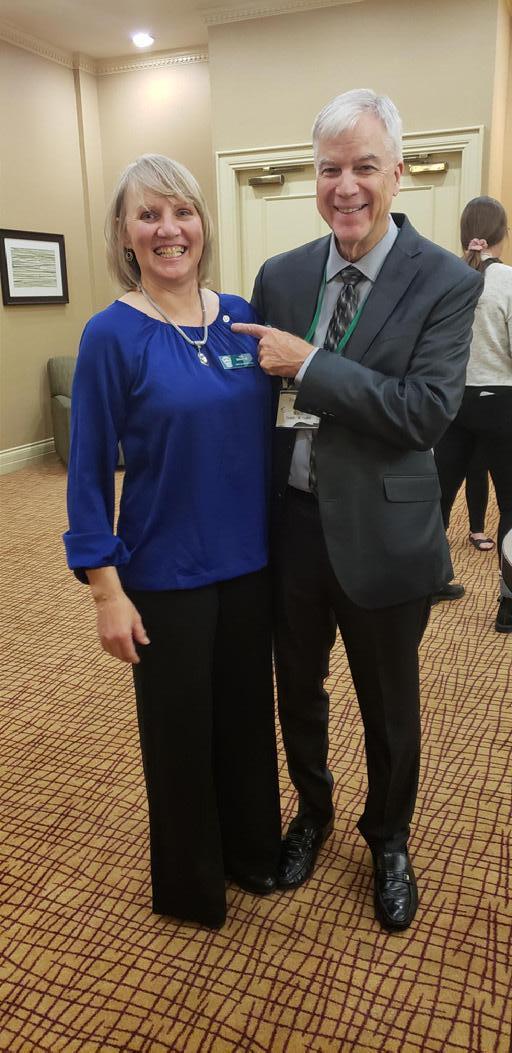

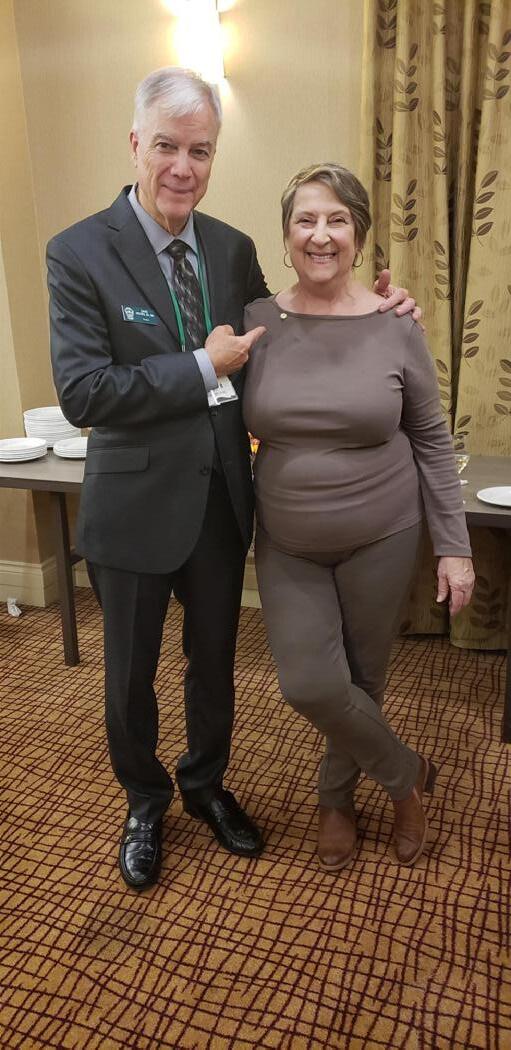
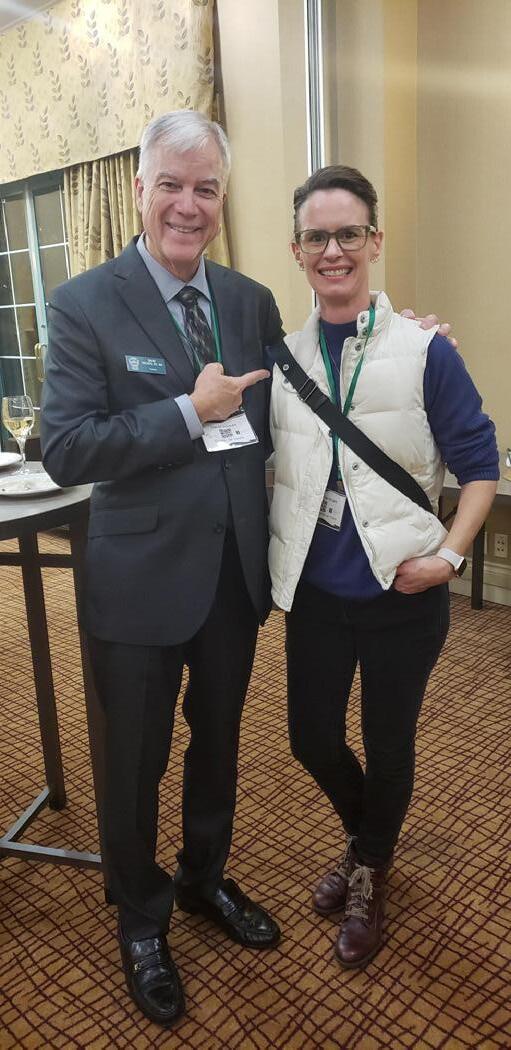


December 7, 2022 was the inaugural meeting of CMCC’s provincial student clubs, created to help students and graduates learn more about practice across Canada. Meetings will cover topics such as chiropractic regulations, scope of practice, utilizations rates and more, addressed by the provincial associations during presentations to
the clubs over the current academic year.
The Chiropractic Association of Alberta (CAA) was the first association to present to students, providing valuable insight into many aspects of practicing in Alberta. Presenters included Dr. Jennifer Adams-Hessel, Vice-Chair CAA
Board of Directors and CMCC Class of ’94 as well as Cecilia Bloxom, Chief Executive Officer of the CAA.
Students attended in person and online. Many thanks to the Club Presidents and Year II students, Shea Forner-Walker and Erica Yan for their efforts in organizing this first provincial student club meeting.

It’s back! A new cohort of the Rehabilitation Certification Program is coming this September. This 85-hour certification program was developed by CMCC and Guerriero Enterprises Inc, in collaboration with the Canadian Chiropractic Specialty College of Physical & Occupational Rehabilitation and the British Columbia Chiropractic Association.
The comprehensive program delves into topics such as integration and exercise prescription, functional capacity evaluation, disability management, and chronic pain management. Leading subject matter experts will instruct chiropractors on how to properly integrate rehabilitation into their everyday practice, improve their plan of management, and ensure better outcomes for their patients.
Through pre-recorded presentations and live Grand Rounds panel discussions, chiropractors can apply theories, concepts, and applications to real-world scenarios and engage with experts to guide their learning and understanding. In addition to the 85-hour rehabilitation certificate, chiropractors will also receive a Functional Capacity Evaluation (FCE) Certification, allowing them to perform FCE services for third-party payors.
Registration coming soon!
CMCC Continuing Education website: ce.cmcc.ca
email: ce@cmcc.ca
 By: Dr. Brian Budgell
By: Dr. Brian Budgell
Really? Well, no.
But a hyperbolic headline does at least get people to read the research. And that is one of the points of the latest in a series of articles about ‘hype’ in health sciences publications. Hype has been the theme of five peerreviewed papers published by the team of Neil Millar, a linguist at Tsukuba University in Japan and me, Brian Budgell, Director of Life Sciences Laboratories at CMCC.
Millar and I have been conducting language research together for more than 15 years and define hype as language used to glamorize, promote and/or exaggerate aspects of research. In particular, it involves using unnecessarily judgement-laden language where something more objective would serve just as well. Everyday examples would be ‘totally awesome’ and ‘perfect,’ which are often used in reference
to things which are frankly not very interesting and decidedly imperfect. But why would scientists, who are supposed
to be objective, resort to such language, and does the use of hype undermine the credibility of research?
The ‘why’ is a complex matter, but it is clear that hype is a recent and rapidly growing trend, not just in science but across all uses of the English language. Interesting and concurrent trends in research writings include an increase in emotive language in general, politicized language, and references to oneself (I or me), versus references to others or to the scientific work itself. And so, we can say that the growth in hype is just part of a trend in the evolution of biomedical language within what has been called the ‘attention economy.’ It is no longer good enough to do good science. We now have to sell ourselves and our work to journal publishers, funders and social media.
Perhaps surprisingly, in a recent study published in JAMA Network Open, we discovered a logarithmic increase in the use of hype in abstracts of grant applications to the NIH. Favourite terms with authors were ‘novel’ and ‘innovative,’ which are now used so often that they have become meaningless. One author, who just couldn’t resist, even described their work as a ‘novel innovation!’ What does that even mean? Other terms which have appeared very recently and have sky-rocketed in use include ‘transdisciplinary’ (up more than 7,600% since it first appeared) and ‘transformative’ (up almost 8,200%).

Interestingly, and in response to some of the buzz around our first NIH study, we went back and looked at the funding announcements that the NIH was making. Perhaps by now you would not be surprised to know that the government’s own announcements showed similar increases in hype over the years. But more than this, there was a very close correlation between
the growth of specific hype words in the announcements and in the subsequent grant applications. In other words, if the funder says they want ‘innovative’ proposals, then researchers respond by announcing that their proposal is ‘innovative;’ if the funder wants ‘impactful’ proposals, then the researchers declare that their work is ‘impactful.’
What we now want to know is whether hype is undermining the value of health care research – is it misleading clinicians into making
incorrect decisions for their patients based on the exaggerated claims of the researchers? A pilot study looking at this phenomenon has already been successfully completed and the team is now gearing up for a full-scale study which they claim will be impactful, transformative, innovative... well, you get it.
"Interesting and concurrent trends in research writings include an increase in emotive language in general, politicized language..."
Dr. Mary-Irene Parker (Class of ‘83) sits on the CMCC Board of Governors. In 2020 she was recognized by the NSCC College of Chiropractors with their inaugural Lifetime Achievement Award. As the third female chiropractor registered to practice in Nova Scotia, she was a groundbreaker, building a thriving practice in Amherst until she sold it in 2000 and moved to her hometown of Parrsboro where she continues to practice while enjoying life with a view of the ocean.
Dr. Parker sat down to chat with Primary Contact about her experience assisting a Ukrainian family to escape their war-torn country.
How did you decide to host a family?
My mother had been living with me for several years and she celebrated her 96th birthday around the time the war in Ukraine broke out. We talked about the impact it would have on the common person and the terror people would experience, worrying about their friends and relatives. That same month, she passed away.
As the war progressed, I thought about how I could help. As a result, I took the inheritance my mother left me and converted the hayloft of a large barn on my rural property. It wasn’t a simple process. I created an independent living area which meant it had to be up to code and inspected as any new home would
be (not the same as having a family move into two or three rooms in your home which has already been through that process). In the end, just 29 feet from my own home was a safe, secure two-bedroom loft apartment with windows looking over the Bay of Fundy, something very special for folks who had never seen the sea!
How did you connect?
I had been in contact with a group of people also hoping to host a Ukrainian family. With the assistance of a minister in Springhill, I was put in contact with Vita Borovik and her 10-year-old daughter Tina, trying to escape to Canada. After a CanadaUkraine phone conversation, I learned that Vita was a teacher with



a Master’s degree, something we had in common. She had experience working in a university setting, something else we had in common after my five years on staff at McGill. These would be huge assets in creating a basis of understanding and overcoming obstacles.
What sort of obstacles did you face?
War devastates everything, including finances. I live outside Parrsboro, a very small community, so raising money to pay for their flight was a challenge. I auctioned off some inheritance and personal items and with the help of my staff, donations from McGill colleagues, fellow chiropractors, and local supporters, managed to cover the ticket costs plus six dollars!
It took several days to organize flights as their travel out of the Ukraine had to be at night via bus, train, bus, train…a staggered start to a seven-day trip from Kyiv to Paris and on to Canada. They left behind a home and relatives they may never see again. They arrived in September, exhausted, but safe, carrying two small suitcases holding not much more than the credentials and papers they needed to get into Canada and a few clothes.
Their only knowledge of Canada was through books, and they arrived terrified of bears! They were constantly locking doors and windows until I assured them hordes of bears were not going to break in. They laugh about it now, but it shows how little they had learned about this place that was to become their new homeland.
Our village has been very welcoming, and our guests are very nice people. At Christmas, toys, food
vouchers and clothing were dropped off at my office for them. A key to our success may be the fact that I was able to provide a separate private residence. They are not encumbered by our customs and vice versa and they have the time they need to adapt at their own speed. They are very independent people and it’s important to help them continue to be as independent as possible. Before coming to Canada, Vita had taught herself some English by reading books out loud. Her grasp of grammar is good, but she struggles with pronunciation. She is working at Tim Hortons while her paperwork is being processed and everyone loves her. She hopes to teach languages eventually. Tina is in grade five and learning French as well as English. Monday nights we go to Guides. We try to speak a bit of English and a bit of French and to learn we use repetition, doing things like crossword puzzles, playing dominoes, and cards. We share a meal once or twice a week and enjoy tasting recipes new to us both.

For me, this has been a wonderful experience. The people of Ukraine are desperately looking for safety for themselves and their families. The bottom line is, if you want to help these people, think it through. Do it
because you want to in your heart of hearts, not because you or someone thinks you should. Once someone is here, to some extent they are very dependent on you. Do your research before you decide, as there are always adjustments to be made. Nothing is perfect. The government gives $3,000 to each adult and $1,000 to each child. After that, they are on their own. Getting credentials to work here takes a long time and they will need your support. It’s a challenge not everyone may be up for.
For those seriously considering helping a family come to Canada, Dr. Parker is available to answer your questions and share more of her experiences. You may contact her through board@cmcc.ca
"Their only knowledge of Canada was through books, and they arrived terrified of bears!"
In the summer of 2022, the Institute for Disability and Rehabilitation Research (IDRR), a collaboration between CMCC and Ontario Tech University answered the World Health Organization’s call for membership in establishing a World Rehabilitation Alliance (WRA). At the completion of their vetting process in December of 2022, the Institute was named a founding member of WRA.
According to IDRR Director, Dr. Pierre Côté, “Our membership in the WRA means Ontario Tech University and the IDRR will be at the forefront of international evidence-based advocacy for rehabilitation, joining forces with governmental and private sector organizations, philanthropic foundations, and other academic institutions to advocate
for the inclusion of rehabilitation services within universal healthcare systems. This is a major global public health issue.
Access to rehabilitation services for all health problems, including chronic conditions such as back pain and diabetes, is very limited. Advocating for research is a critical vehicle for making the case to governments to invest in evidencebased rehabilitation care.”
IDRR will have input into two WRA
working groups: Research, led by Dr. Côté, and, Primary care, led by CMCC’s Dr. Silvano Mior.
“Primary care is a critical entry point for people seeking rehabilitation services,” says Mior. “To address unmet needs requires effective and efficient interprofessional collaboration at the primary care level. Participating in this working group takes us one step closer to addressing the challenges facing those in need of rehabilitation services.”
"To address unmet needs requires effective and efficient interprofessional collaboration at the primary care level..."
Since its inception, the Institute’s faculty has attracted and trained seven post-doctoral fellows, of which three were international. It has also hosted eight PhD students, 14 Master’s students and four undergraduate students at Ontario Tech University. Also, as a placement for CMCC residents, it has welcomed 23 post-graduate residents and four international visiting students/researchers.
In 2012, the Centre for Disability Prevention and Rehabilitation (CDPR) was established through a research partnership between Ontario Tech University and the Canadian Memorial Chiropractic College (CMCC). The Centre was inaugurated by the Honourable Deb Matthews, Minister of Health and Long Term Care on July 16, 2012.
Under the direction of Pierre Côté, DC, PhD, the Centre worked with related health research and innovative supportive agencies, educational partners, health-care delivery institutions, industry and government to examine questions focused on the prevention and management of chronic musculoskeletal and psychological conditions and disabilities. Research was directed to generating new ideas involving integrated, collaborative and evidence-informed approaches to health care.
“The WRA membership will provide opportunities for our students to be exposed to, and develop skills in, evidence-based advocacy,” says Dr. Côté. “It will also connect students to a wide network of international stakeholders. Ultimately, it will provide IDRR and CMCC with the ability to involve students in global policy development projects.”
Baus, Vice President of Academic and Dr. Anthony Tibbles, Dean of Clinics are members of IDRR’s steering committee, offering oversight and support. Drs. Sheilah Hogg-Johnson, Biostatician and Research Methodologist and Craig Jacobs, Director of Clinical Education and Patient Care are CMCC scientists also involved in the Institute.
In 2013, Dr. Côté was selected by the Financial Services Commission of Ontario (FSCO) to carry out a comprehensive systematic review and economic analysis of common traffic injuries and treatments in Ontario.
As lead investigator and Chair of the Ontario Protocol for Traffic Injury Management (OPTIMa) Collaboration, Côté’s task was to develop recommendations based on scientific evidence and build consensus on the research team’s findings. The resulting 279-page report 1 had implications for the Ontario Auto Insurance Industry. “It was clear that a re-think of the system was vital,” said Côté. “The treatment protocol for traffic injuries in Ontario needed a significant update and our work led to the development of 15 clinical practice guidelines for the management of common traffic injuries.”
In June 2021, the Institute for Disability Rehabilitation and Research (IDRR), formerly known as the Centre for Disability Prevention and Rehabilitation (CDPR), expanded its scope to include expertise from the Faculty of Social Sciences and Humanities at Ontario Tech University and create a holistic research program in disability and rehabilitation.
“The impact of partnering with colleagues from the Faculty of Social Sciences and Humanities has been extremely positive. Our research is now firmly grounded in social justice and political advocacy,” says Côté.
With this expansion, the partnership became formally known as the Institute for Disability and Rehabilitation Research.
1. https://www.fsco.gov.on.ca/en/auto/Doc uments/2015-cti.pdf
Toronto, Ontario
July 13 - July 15, 2023
Hosted at CMCC
A highly interactive three-day experience for teachers and administrators in complementary and integrative health education.
Keynote speaker is Dr. Gordon Guyatt, McMaster University.
Legend: Administrative Track Workshops
Plenary/Keynote Teaching Track
Foundations of Evidence-Based Practice (EBP) Track Leads: Drs. Katie Pohlman, Scott Dunham, and John Stites

Ground Rules and What to Expect Teaching Track Leads: Drs. John Stites, Alex Lee and Robert Rowell
From ‘Live Searches’ to LibGuides: Library Resources to Support EBP Dr. Natalia Tukhareli and Kent Murnaghan
Small Groups
Introduction, Agenda and Objectives Administrative Track Leads: Drs. Katie Pohlman and Scott Dunham
Steps for Developing and Implementing an EBP Curriculum Dr. Enas el Gouhary
Program Examples in Complementary and Integrative Healthcare (CIH)
To Treat or Not to Treat Dr. Enas el Gouhary
Attend One Workshop: Critical Appraisal of Systematic Reviews Dr. Jason Busse
EBP as Reflective Practice Dr. Ted Crowther
Engaging Qualitative Health Research: Applying and Appraising Qualitative Studies Drs. Silvano Mior and Melissa Atkinson-Graham
Clinical Practice Guidelines: Interventional Procedures for Spinal Pain Dr. Jason Busse
Keynote Presentation: How to Recognize a Trustworthy Practice Guideline Dr. Gordon Guyatt
Attend One Workshop:
Why Effect Size Matters - Maximal Importance of Minimal Clinically Important Differences Dr. Joshua Goldenberg, ND
Critical Appraisal of Systematic Reviews Dr. Jason Busse
The “Apply” E-Module: How to Teach Shared Decision Making and Empathy Drs. Natalia Tukhareli and Lara deGraauw
Engaging Qualitative Health Research: Applying and Appraising Qualitative Studies Drs. Silvano Mior and Melissa Atkinson-Graham
Small Groups and Mentored Self-Directed Study Teaching Track Leads: Drs. John Stites, Alex Lee and Robert Rowell
Faculty Training in the Acquisition of EBP Skills Dr. Kim Ross
Check-in: Teaching Module Progress
Modeling EBP Teaching, Feedback and Innovation Teaching Track Leads: Drs. John Stites, Alex Lee and Robert Rowell
Transforming Library Collections and Services in Response to Professional Development Needs Dr. Natalia Tukhareli
Integrate EBP Behaviors into Clinics and Patient Care Dr. Daphne To Examples from CIH Programs - Train and Integrate Administrative Track Leads: Drs. Katie Pohlman and Scott Dunham
WHO Low Back Guideline Development from Start to Finish Dr. Carolina Cancelliere

Shared Decision Evidence Summary (ShaDES) Framework Dr. Pierre Côté
Attend One Workshop:
Why Effect Size Matters - Maximal Importance of Minimal Clinically Important Differences Dr. Joshua Goldenberg, ND
Critical Appraisal of Diagnostic Studies Dr. Carolina Cancelliere
EBP as Reflective Practice Dr. Ted Crowther
Modeling EBP Teaching, Feedback and Innovation Teaching Track Leads: Drs. John Stites, Alex Lee and Robert Rowell
Open Focused Discussion Administrative Track Leads: Drs. Katie Pohlman and Scott Dunham
Creating Institutional Processes Dr. Anthony Tibbles
Parking Lot and Q & A
Take Home and Future Planning Teaching Track Leads: Drs. John Stites, Alex Lee and Robert Rowell
Global Experience in EBP Dr. Ted Crowther

Goal Setting for CIH Programs - Take Home and Future Planning Administrative Track Leads: Drs. Katie Pohlman and Scott Dunham
Hosted by:
Sponsors:
I had no idea that the CMCC Board of Governors would become a part of my chiropractic journey. As a student I didn’t even know what they did. I know now that the Board of Governors is responsible for all matters of policy pertaining to the direction, operation and maintenance of corporate governance and professional, academic and ethical standards with regard to CMCC. It’s an important board, and serving on it has been a gratifying experience.
I am Dr. Sarah Williams (née Warren), a 2015 CMCC graduate from Niagara Falls, ON. I met my husband as a CMCC classmate, and after graduation we opened a new multidisciplinary clinic in his hometown of Fredericton, New Brunswick. Today we have two sons aged four years and one month; and a strong evidence-based clinical team of various professions in a newly-renovated building. A lot can change in seven years, but I have always been exceptionally passionate about CMCC and our profession.
I loved my time at CMCC – four incredible years of knowledge acquisition, mentorship, friendships and skills building. CMCC is the world leader in
chiropractic education and I knew I wanted to stay connected and give back somehow.
After moving from Ontario to New Brunswick, I sought out the current CMCC Board member from our province at the NB AGM reception and said to her, “If you’re ever done with your job, I’d like to have it please.” Fast forward to October 2017 and I had been through the nomination process and was welcomed to the Board. It has been a meaningful five years seeing CMCC continue to advance in chiropractic education.
The Board meets in person three times per year and does committee work, virtually, throughout the year.
I look forward to the meetings and monthly updates and the projects that are completed. I am always impressed by the incredible amount of work done by President Dr. David Wickes and his team at CMCC. It’s moving to see their dedication to this organization that means so much to so many.
I joined the Board to stay connected to CMCC and donate my time as a way of saying thank you for the life being a CMCC graduate has given me. I enjoy contributing and bringing a different perspective as the youngest chiropractor currently on the Board. This is my way to contribute to the profession beyond my clinical practice.
“It has been rewarding to give my time and energy to contribute to the future of the chiropractic profession and to CMCC by being a representative on CMCC’s Board of Governors.”
You never know who you’ll inspire - your participation might help others see in what way they can contribute.
As a chiropractor you have first hand experience in CMCC’s mission - to deliver world class chiropractic education, research, and patient care. You’ve had the education, participated in and use the research, and provide patient care. I learn something new with each meeting, so this is an excellent opportunity for a life-long learner. You can to step outside your dayto-day to participate in decisions that will impact the future of chiropractic.
My takeaway from participation is that governance is changing - for the better - and CMCC has a great functioning board that is abreast of these upcoming best practices.

You also work alongside an inspiring group of people from all over the country and beyond. They become your colleagues and friends. Together you do the work you are passionate about. I remember when Dr. Scott Haldeman sat next to me during the
first meeting. I didn’t know if I could call him Scott and thought about having him sign my textbook, as its author!
The Board of Governors also has a fundraising role in Backs in Motion. It’s critical to our mission to continue to raise funds for education, research and patient care. The event is always fun, and I love to connect my current
community with CMCC, which gave me so much support while I was in school and such a great life beyond school. I will be participating in a stroller run for Backs in Motion again this year, virtually, along the trail in Fredericton, with my sons, husband and our corgi named Stella.
If you are interested in giving back to CMCC and your chiropractic community reach out. Opportunities await!
Information is not knowledge. The only source of knowledge is experience. You need experience to gain wisdom.
Albert Einstein
Reconnect June 2 & 3 at CMCC for your milestone anniversary, a memorable weekend of social events and a two day CE program (9 CE hours)

What can you expect?
• Formal sit down dinner, barbecue and time to organize your own get-together
• Technique class, FSTT® and Sim lab workshops
• Homecoming hotel - 12 minutes from CMCC - $219 per night – June 1 – 4
• Alumni Awards – nominate your classmate


"From March 2020 to April 2021, there were over 6,900 apparent opioid toxicity deaths in Canada and over 75,600 in the United States, the highest annual toll on record" (Government of Canada, 2021; CDC, 2021).
The Canadian Memorial Chiropractic College (CMCC) and the Ontario Chiropractic Association (OCA) have developed an online course designed to help practitioners safeguard patients’ health and foster collaboration with medical professionals in managing, reducing, or eliminating opioid dependency. Interactive simulations and learning assessments are used in the four chapters of the course:
1. Chiropractic and Pain Management
2. Opioid Facts
3. Performing Case Outreach with Other Health Professionals
4. Communicating with Other Health Professionals
This online educational resource will help chiropractors increase their competency in case outreach, facilitate communication with other healthcare professionals, and provide quality care to patients who suffer from chronic pain.
Developed by the Ontario Chiropractic Association and CMCC
CMCC Continuing Education
website: ce.cmcc.ca
email: ce@cmcc.ca
How would you like to use your experience of CMCC and your professional knowledge to make a difference? CMCC is building an Insight Community of alumni and friends to work with us, providing feedback, interests, insights and tips to help us create an even better experience for everyone who interacts with us.
If you’d like to participate, let us know. Email us at insight@cmcc.ca


(WSC) is set to collaborate with the Pimicikamak Okimawin (Cross Lake First Nation) community in Northern Manitoba. Key to the project’s success is Dr. Jennifer Ward (Class of ‘03), an Indigenous chiropractor who has been delivering care on the Opaskwayak reserve for the past 20 years.
team, we hope to design a model of care that is not only culturallyspecific, but one that will have long lasting impacts on the health and wellbeing of Pimicikamak. This research has the potential to be delivered to communities right across Canada.”
In the research study entitled Reducingbarrierstoconservative spinecaretominimizeopioid exposure:Aglobalspinecare implementation, World Spine Care
“We are studying the feasibility of implementing the Global Spine Care Initiative (GSCI) Model of Care (MOC) in Pimicikamak, a First Nations community in Northern Manitoba,” says Ward. “By being involved in this research, we are understanding how an existing model of spine care can be customized to suit the needs of this community and how proper spinal care can add value to the well-being of not only the individual, but to the community as a whole. By ensuring that patients have access to the right care, at the right time, in the right place and by the right
“The work that I am doing right now has the potential for considerable impact,” says Ward. “I currently travel to Pimicikamak weekly to conduct the chart review, community health surveys and interviews. In the upcoming weeks, I will provide services to a community that has not had the services of a chiropractor in a long, long time. By travelling here to the patients, we have eliminated the barrier to access. And with the receipt of grants from the Canadian Chiropractic Association, the Canadian Chiropractic Research
Foundation, the Skoll Foundation and Health Canada, we will be able to provide treatments in the existing facilities at Pimicikamak. This has eliminated the barrier of a fee for service structure.
“More importantly, by collaborating with the leadership, the health care staff and the people of Pimicikamak, we are understanding ways in how to incorporate our Indigenous perspectives and world view into the existing model of spine care. This provides a more profound impact, because it brings my teachings as an Indigenous person to my profession. By braiding and weaving our traditional teachings into our health care system, we hope to create a model that is culturally appropriate and successful in creating a new standard of spine health for Indigenous Peoples in Canada.
Pimicikamak, a Nation of approximately 8,500 people on the reserve, has suffered from an overburdened health care system and its citizens face increasing health concerns. “Pimicikamak is pleased to participate in the Global Spine Care Initiative (GSCI) research project,” says Chief David Monias, Pimicikamak Okimawan. “This research will provide us with statistics and assist the team in examining and understanding how spinal issues may or may not cause spinal pain and/or poor motor skills. The most important part is the potential to advance best practices in therapies, health, and wellness to help people with spinal pain experience improved motor function and increase their quality of life.”
While Ward is the key player in implementing the study, she is also completing her PhD at the University of Manitoba. “I believe
that education is a life-long journey and I wanted to be able to serve my community in a different way,” she says. “As an Indigenous practitioner, being in private practice on the Opaskwayak reserve for the past 20 years has allowed me to provide services to local residents. I hope to one day be able to expand my impact on Indigenous communities right across Canada.”
The WSC study team is comprised of researchers and chiropractors from the University of Manitoba, l’Université du Québec à TroisRivières (UQTR) and CMCC, drawing on the data made possible by Dr. Ward and the participation of Pimicikamak Okimawin. Dr. André Bussières (Class of ’91), a UQTR and McGill University researcher and Dr. Steven Passmore (U of Manitoba) are the primary investigators for the study.
"We must first understand the interest and capacity of the environment to welcome change, and work with individuals, as well as listening to community voices including patients, local leaders, Nursing Station staff and also Indigenous healers who practice care more centred on ancestral tradition. What is interesting and positive is that manual therapy represents for them this holistic vision of care that respects the choices of the individual," says Bussières.
CMCC faculty members involved in the study include Drs. Pat Tavares,
Providing hands-on care for low back and neck pain is just one part of a larger strategy over the next few years. This initiative also includes training local clinicians on the GSCI model of care and a communitybased, educational movement program informed, in part, by traditional Cree dance styles. The GSCI, the scientific arm of World Spine Care, aims to work with underserved communities around the world. According to the GSCI, rates of chronic back pain are higher in low- and middle-income countries. Still, they can also be high in rural areas of higher-income countries where access to health care is limited.
This research aims to better understand the interest and capacity of the community to welcome change, and work with individuals, as well as listening to community voices including those of patients, local leaders, and Nursing Station staff. In partnership with leaders and clinicians, knowledge gained will serve to facilitate capacity building in the community, and culturally adapt, and implement the GSCI model of spine care. The group expects to integrate the new clinical service and community program in late fall/early winter 2023. The research will also evaluate the impact on the health of the community residents.
"By braiding and weaving our traditional teachings into our health care system, we hope to create a model that is culturally appropriate and successful in creating a new standard of spine health for Indigenous peoples in Canada."
On December 2, World Spine Care (WSC) was one of two organizations lauded for the collaborative manner in which they modelled their studies of Indigenous communities. At a press conference at which Health Canada announced $10 million in funding for Substance Abuse and Addictions Programs (SUAP) across Canada, Minister Carolyn Bennett highlighted World Spine Care (WSC) as well as Native Child and Family Services Toronto for its harm reduction education program for Indigenous Peoples.
WSC was singled out for its impact study and implementation to
evaluate the integration of the WSC/GSCI (Global Spine Care Initiative) model of spine care within an Indigenous community and to evaluate the impact of delivering spine care in a remote community. The study includes the examination of the use of opioids, narcotics and other medications for MSK pain and the acceptance of the community to these spine care services.
According to The Honourable Carolyn Bennett, Minister of Mental Health and Addictions and Associate Minister of Health, “Indigenous Peoples carry a
disproportionate burden of the harms related to substance use, including opioids. Organizations like World Spine Care Canada make a significant difference in helping Indigenous communities struggling with chronic pain build evidence for the culturally-sensitive and trauma-informed health supports they need.” Initiatives like Reducing barriers to conservative spine care to minimize opioid exposure: A global spine care implementation will help improve the quality of life of Indigenous people living with spinal issues and reduce substance use harms in the Cross Lake First Nation Community in Manitoba.

Collaboratively produced with New York University Langone Health, this blended course on Psychologicallyinformed Practice (PiP) will present chiropractors with evidence-based methods to approach care that will result in better patient outcomes, especially for those at risk of developing prolonged pain and disability—all through the power of words.
Research indicates that the earlier health care providers intervene with the maladaptive thoughts and behaviours of patients, the more likely they can be successfully addressed. With the proper training, chiropractors can modify many psychological risk factors without the need for involvement of formal psychological treatment. They will also be able to recognize when patients require further psychological evaluation beyond their skill level to ensure the proper referrals are made. Utilizing a biopsychosocial model where patient care is at the centre, PiP enables chiropractors to impact the ways their patients understand and cope with pain. This course serves as a training tool to help chiropractors identify the psychosocial obstacles their patients face and modify them using specific cognitive and behavioural strategies. By making function, not pain, the focus of treatment, PiP empowers the patient to restore their function, improve their quality of life, and recognize that their pain does not define them.

Coming this fall, Psychologically-informed Practice (PiP) will be available to chiropractors and other complementary healthcare providers across North America. Stay tuned for more information!
CMCC Continuing Education
website: ce.cmcc.ca
email: ce@cmcc.ca


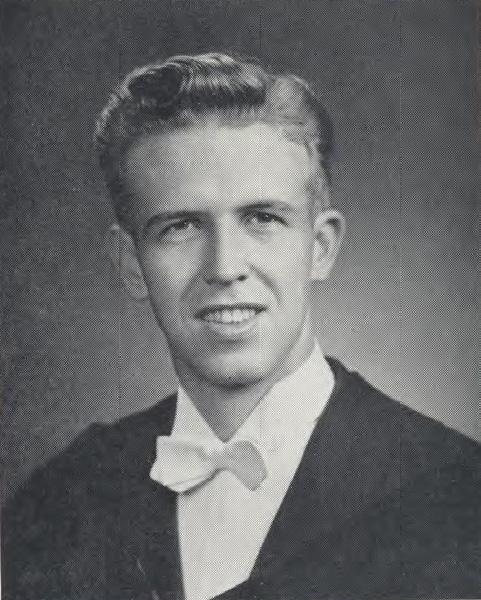
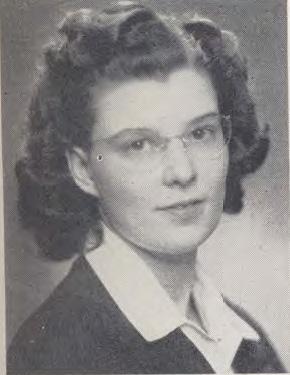
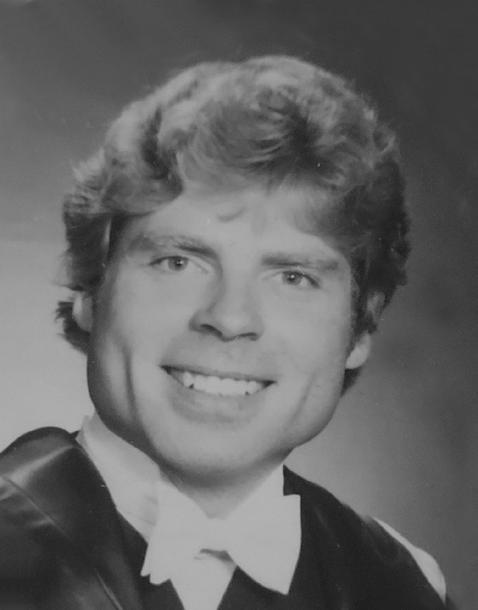
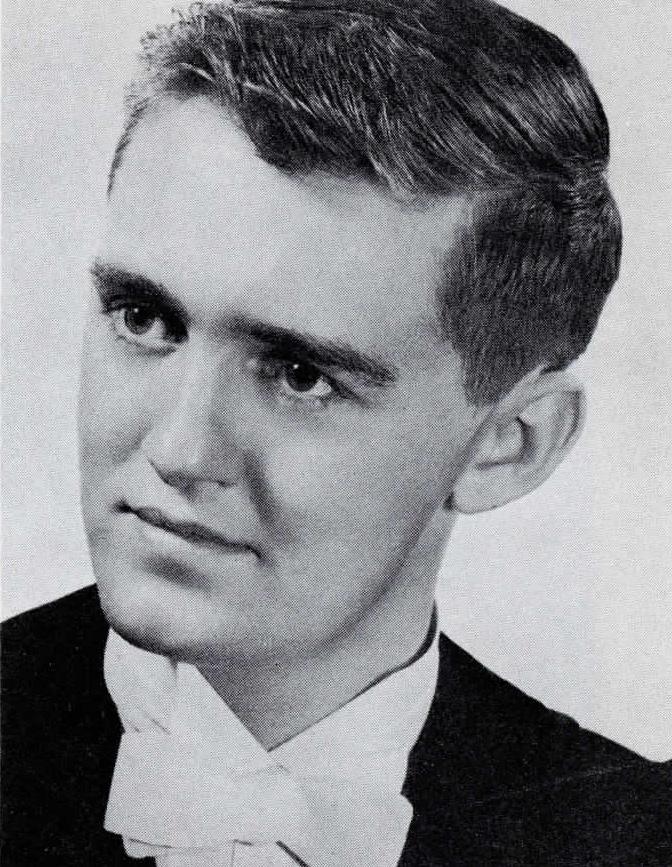
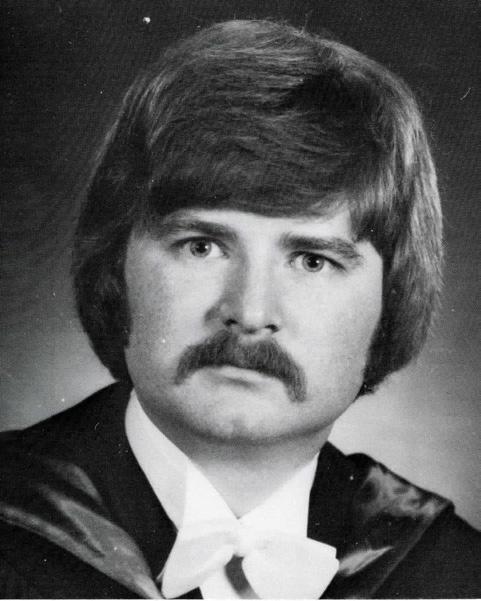

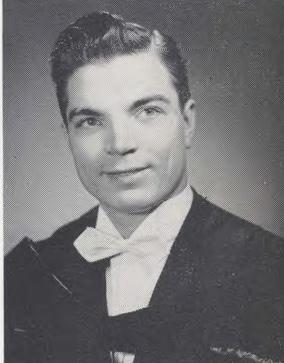
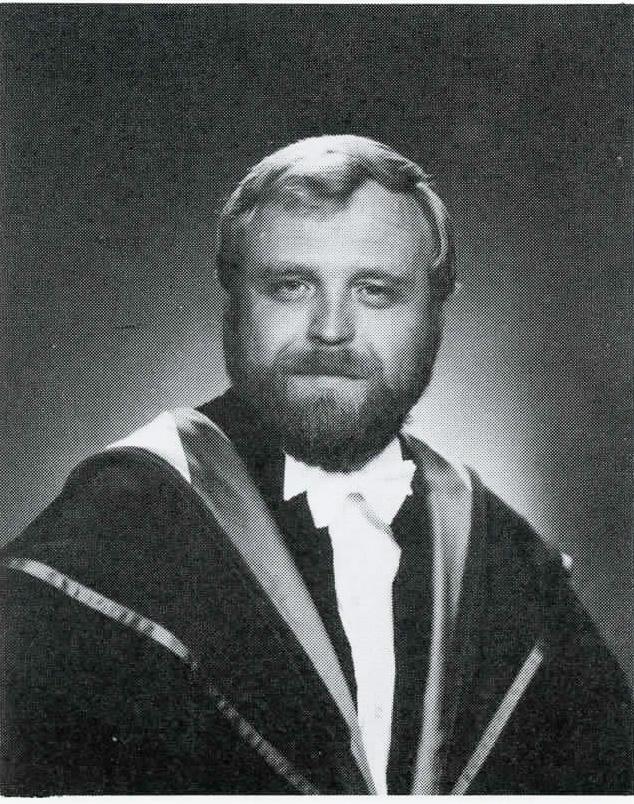
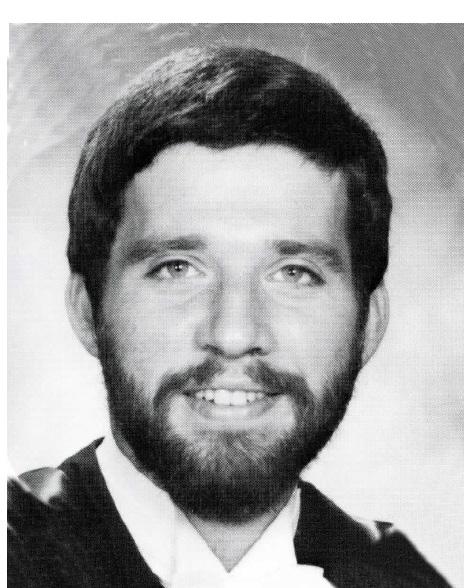
CMCC is grateful to its supporters who have thought to include a donation to CMCC in recognition of the passing of their loved one. Memorial cards are available through Donation Services at 416 482 2340.
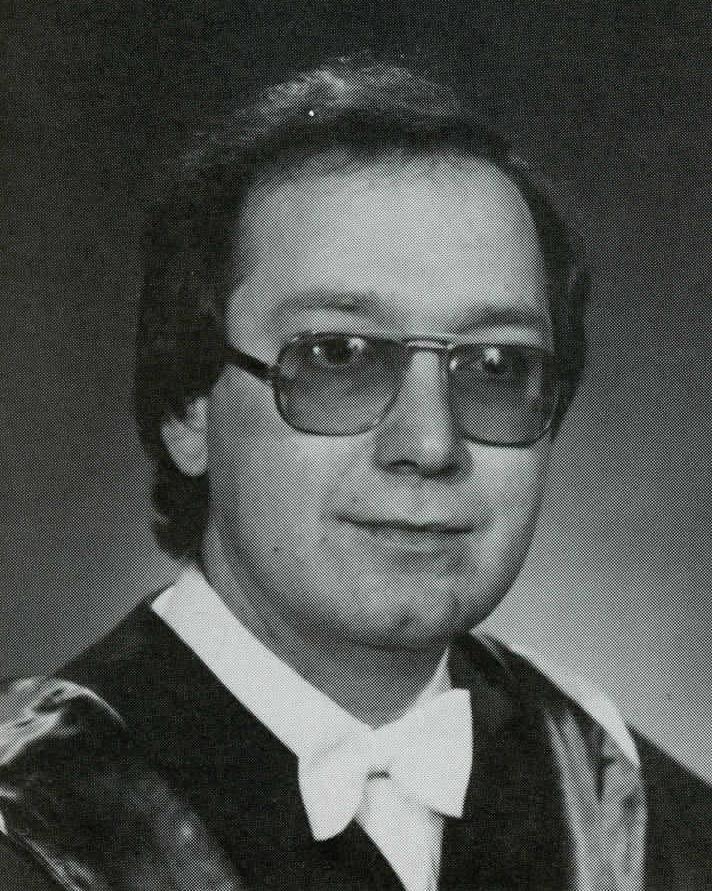 Dr. Jack Ellis Class of '85
Dr. Roy Farnsworth Class of '51
Dr. Brian Ross Hoshizaki Class of '91
Dr. Don Leck Class of '78
Dr. Claude Bourassa Class of '80
Dr. A. Paul Kent Class of '61
Dr. John Haberstroh Class of '83
Dr. (Albert) Mark Curtis Class of '87
Dr. Helen Peel Class of '49
Dr. Leo Clement Class of '52
Dr. Jack Ellis Class of '85
Dr. Roy Farnsworth Class of '51
Dr. Brian Ross Hoshizaki Class of '91
Dr. Don Leck Class of '78
Dr. Claude Bourassa Class of '80
Dr. A. Paul Kent Class of '61
Dr. John Haberstroh Class of '83
Dr. (Albert) Mark Curtis Class of '87
Dr. Helen Peel Class of '49
Dr. Leo Clement Class of '52
Dr. Richard Luck was beyond all things a gentleman. He graduated from CMCC in 1954. His tenure on the CMCC Board from 1975 to 1984 took place at a time when CMCC needed extraordinary leaders to help the profession establish itself as a primary care health profession and CMCC as a leader in chiropractic education. Richard was Board Chair from 1980 to 1982 and was among a chosen group of leaders such as Doug Brown, Len Cunningham, and Ken Smith, just to name a few of the outstanding leaders of the profession in the 70s and 80s.
Richard had a very strong link to CMCC. He and his wife, Betty, who was always at his side, were committed to attending CMCC events wherever and whenever they occurred. He was instrumental in the founding of the CMCC Governors' Club which has supported CMCC for over 50 years. He was known for creating the famous Governors’ Club hats which became a strong focus of attention and bemusement. On one
visit to Banff, Alberta, Rich, as he was fondly referred to, was soliciting membership in the Governors' Club. Being intensely involved in his fundraising endeavour, Rich proceeded to walk backwards into the hotel swimming pool. Without interruption, he continued praising the benefits of contributing to CMCC.
Rich’s involvement on the Board of Governors came at a pivotal time in the history of CMCC when the governance structure changed from being Board-centred to presidential-centred governance. His commitment to this substantial change was evidenced by his leadership in the appointment of Dr. Ian Coulter as the first and only non-chiropractor as president of CMCC. Dr. Luck had to make some very difficult decisions during his tenure as Chair of the Board including dealing with the external clinic at Parliament and Gerrard in downtown Toronto, and having to take over the space at 1900 Bayview Avenue that was occupied by the CCA and OCA. In all of his dealings
as Board Chair, Rich acted with exemplary professionalism always keeping in mind what was best for CMCC.
Rich, beyond his financial and time commitments to CMCC, was an avid sportsman, a tennis player and skier. He ran a successful practice in the Bloor-Jane area of Toronto where he provided chiropractic care to a large number of community residents. His son Ted joined him there after he too graduated from CMCC. Rich and Betty eventually moved farther north in Ontario where he continued to provide care to patients and enjoy his later years in life.
Richard Luck will be remembered as a founder, leader and guiding light of CMCC as it moved into accreditation and recognition as a leader in chiropractic education.

We fondly remember Dr. Brent Mills. Born and raised in Scarborough, Ontario, Dr. Mills earned a Master’s degree in Anatomy from Queens University, and graduated from CMCC in 1987. He was also a Fellow of the Canadian Chiropractic Specialty College of Physical and Occupational Rehabilitation. Mills moved to Kingston in the late 80s and set up his chiropractic office in his home on Bath Road. He eventually moved the practice to the old schoolhouse on Purdy’s Mill Road and served the residents of Kingston and surrounding area for 34 years.

In his spare time, Dr. Mills was an avid reader, golfer and traveller. He was an accomplished pianist and violinist, sang with Cantabile and danced in numerous “Father” dances with I’ve Got Rhythm Dance Studio. Brent loved to cook, make wine, beer and cheese. He enjoyed travelling with his family and spending time at his family cottage on the Big Rideau with a book and a beer.
He is survived by his wife and coworker of 32 years Gilda, children Fiona and Peter (Kay-Lee), and mother Dorothy.
Mills returned to CMCC to serve on the Board of Governors from 2006 to 2011 as the Ontario Representative to the Board. His colleagues remember him:
Dr. Kelli Blunt
I first met Brent in the mid-1990s when he asked if could help him with the Hands on the Future capital campaign for CMCC in our southeastern Ontario region. This would begin a most meaningful, fortunate and long relationship with a colleague, mentor, confidante, and friend. We would later serve on the Board of Governors together from 2006 to 2011 after Brent was elected Ontario Representative to the Board. We served on various
committees together but what I hold dear are the wonderful conversations we had driving to the meetings. We shared stories about our clinical successes and challenges, our families, our goals and aspirations for our clinics and the governance of CMCC.
After the business of the Board was completed, the members would appreciate the conversations, encouragement, and mentorship as we talked about CMCC, practice and life. These were the times when I learned more about Brent’s enjoyment of time with his family, at their cottage, and his love of food and music.
Each year as Dr. Ron Brady would challenge Board members to outperform each other in raising funds for the CMCC Backs in Motion Run/Walk, Brent would be my walking partner. One year, Dr. Scott Haldeman began a further challenge, with added proceeds for CMCC in the event he could
speed walk the fastest 5K. Brent and I held a steady pace with Dr. Haldeman through to the final kilometre, but we were no match as he breezed ahead and waited to collect our donations!
Later, I would become Brent’s patient and he would honour our friendship by treating my family who lived close to his practice. It was not hard to witness his professionalism, devotion, kindness, loyalty, and dedication to serving within the walls of his thriving practice. He was indeed an asset to the Board in his values, work ethic, and “service above self” and I greatly appreciated having Brent on the Board while I was Chair.
At the Board level, I remember Brent being very happy to be on the bylaws committee. We were rewriting them at the time and he felt his greatest contribution was his writing skill! Since I was heading up that committee I was
very happy to have his skills at my disposal.
More than anything, I remember how important family was to Brent. We would have many chats about his son, Peter, over a tasty beer. I was recently looking at a photo of Peter standing in front of a pub while on holiday in Croatia I believe, with Peter pointing at the sign. The sign was advertising a beer that Brent and I often had when we were together following Board meetings.
Dr. Richard Mercier

I had the privilege to get to know Brent during our four years at CMCC; we were proud classmates from the Class of ‘87. Since our last names were very close to each other, I had the opportunity to meet him frequently during technique labs, and other classes. We always had a lot of fun discussing all kinds of things, even hockey. I think he was a Maple Leafs fan and I am still an avid Habs fan.
During a Diagnosis lab where we were learning how to take blood samples from our fearful colleagues, Brent caused quite a stir in the class when he suddenly passed out, hitting his head on a table on his way down. Fortunately, everything ended very well for him but I always liked to tease him about this incident.
It was Brent who reached out to me in 2011 about the potential to become a member of the CMCC Board of Governors and I will always be very grateful to him. He left the Board six months after my arrival; I always hoped I was not the reason why!!!
Brent was a very special guy, always in a good mood, very respectful and always ready to help. No doubt these qualities allowed him to be the exceptional father and chiropractor that he was.
SALUT BRENT!!!You will face many defeats in life, but never let yourself be defeated. MAYA ANGELOU
The international chiropractic community lost an advocate, administrator, teacher, colleague, and dear friend with the passing of Dr. Glynn Till, a 1962 graduate of Lincoln College of Chiropractic (Indianapolis, 1926 to 1971) and a 1988 graduate of CMCC’s Clinical Sciences Graduate Program. He later served as an Associate Dean of Undergraduate Education along with his spouse, Dr. Hettie Till. The two joined Dean John Mrozek in transitioning CMCC’s Doctor of Chiropractic program into an evidence-informed, outcomebased format.

Dr. Till served as an important advocate for the profession from his early days of practice. In 1971, roughly a decade after he graduated, the Chiropractors Act was passed in South Africa. The act provided for the licensing of only existing chiropractors and chiropractic students. Meeting with South Africa’s Ministry of Health in 1977, Dr. Till produced a rebuttal to the
outstanding questions regarding the profession and in 1982, the Ministry passed the Allied Health Professions Act, an important step in the future licensure of chiropractic in the country.
Dr. Till and colleagues later travelled to North America and the UK and presented a report of findings to the Department of Health that eventually led to the development of chiropractic studies at Technicon Natal in Durban, now known as the Durban University of Technology. To ensure the program reflected international standards, Dr. Till moved to Toronto, Ontario for graduate studies at CMCC. He returned to the program in South Africa and became the country’s first academic chiropractic department head. Some years later, he relocated to Canada for his role as associate dean at CMCC.
After his tenure at CMCC, Dr. Till moved to Scotland for a short
retirement. He returned to South Africa in 2012, resuming practice and volunteering as a consultant to the Senior Advisory Panel of the Chiropractic Association of South Africa.
As a member of CMCC faculty during a pivotal time, Dr. Till became close with a number of faculty and colleagues, some of whom have been kind enough to share their memories here.
Dr. Kim Ross, CMCC Director of Assessment:
I remember meeting Glynn in my third year as a CMCC faculty member as he was completing his residency program at CMCC.
When he returned in 2001 as Associate Dean of CMCC, as department Chair, I reported to him. He wanted to see an integrated curriculum at CMCC and the first step was to align
topics in the courses so that the prerequisite basic science material was delivered immediately prior to the clinical application.
I remember a curricular planning meeting at a hotel at Mt. Pleasant and Eglinton in Toronto. Every course coordinator had written their course topics on index cards. The basic science crew loaded a giant table first, working together to arrange the cards so that similar things were being taught at the same time. Anatomy got the ball rolling because dissection was used in the course, and therefore the order of topics was not terribly flexible. Since the focus of chiropractic is spine, nothing could get off the ground (including technique) until the back was covered. Since the back delivers structures to the lower limbs, that became the next topic as students continued their journey through the human body. Then the semi-clinical application courses (like biomechanics) placed all their cards on the table to align just slightly after the anatomical content delivery. This meant the students could easily follow the biomechanics of the joints because the anatomy had already been covered. Finally, the pure clinical courses placed their cards on the table (e.g., Diagnosis, Orthopaedics and Radiology). The cards were photographed, and these were used to generate the student schedule.
Later, the curriculum was broken down into topical modules. To be honest, even with all the changes to the curriculum since, the basic structure remains the same to this day.
The other benefit of this exercise was to ensure that
the material delivered in basic science courses was relevant to a chiropractic practice. CMCC’s curriculum has always been voluminous, but from this moment, coordinators had to justify content by showing where it fit in the program. With a final outcome of patient assessment, diagnosis and treatment, it became clear which content would not be helpful in generating competencies required of a practicing chiropractor. I remember removing material from the course I was teaching because the material was relevant to a biomechanist, but would not help a student become a health care practitioner. Many years after Glynn left CMCC, the foundation just described led to the seven roles and key competencies that CMCC uses today.
What I remember most about Glynn's role at CMCC was his contribution to the degree granting status that CMCC enjoys today. Since Glynn had done similar work at Durban, he was the logical choice to get things off the ground at CMCC. I didn't work directly on this task, but whenever he needed curriculum data to support documentation, Glynn would tell me what he needed, and I would provide him the information with little idea of how it would help. When it was completed, I could see all the parts that I had passed over to him in the finished product.
As such, the DC designation following the name of a modern CMCC graduate represents a degree as opposed to a diploma. This was a critical step in generating future relationships with other academic institutions, also enjoyed by CMCC today.
Dr. Silvano Mior, Director Research Partnerships
I was the coordinator of the Clinical Sciences Program when Glynn was a resident. As a mature student, his clinical and life experiences enhanced our program. He was the consummate gentleman, always respectful and rarely imposing his personal, professional and worldly experiences upon those around him. His gentle, yet commanding manner could settle a room and bring individuals into conversation, regardless how controversial the topic - and oh, did he enjoy debating such topics.
Glynn was passionate about the profession and his roots, but wise enough to appreciate the importance of changing with the times.
I will miss regular emails from Glynn but am comforted by having known and shared laughs with him, and the privilege of his friendship. Missed but not forgotten.
Dr. John Mrozek – former Dean of Undergraduate Education CMCC Glynn Till was a friend, leader and pioneer. His breadth of experience in chiropractic as practitioner, teacher and administrator was exemplary. He was in a constant quest of greater knowledge and understanding of chiropractic, chiropractic education and healthcare.
I met Glynn when he was a CMCC resident, over 30 years ago. The residency formed part of his preparation for the development of a chiropractic program at Technicon Natal in Durban, South Africa. Years later as Dean, I had the pleasure of working with him
in his role as Associate Dean of Undergraduate Education at CMCC. I also had the pleasure of working closely with Glynn’s spouse, Hettie, also an Associate Dean of Undergraduate Education.
Glynn’s experience and knowledge impacted the rollout of our revised curriculum. His leadership style and experience contributed to making CMCC a leader in chiropractic education, a legacy that lives on.
A bon vivant, Glynn loved cooking, fine dining, great wine and entertaining. If you needed information on growing roses, he was your source. If you wanted to taste fabulous cuisine, Glynn could provide it. He was also king of his Mongolian grill.
Glynn is survived his wife, Hettie, and siblings on both sides of the family in South Africa. His contribution to chiropractic spans several continents and his influence lives on in the students he taught, the patients he treated, and the people he met. May he rest in peace.
Dr. Jeffrey Quon, Associate Professor at the School of Population and Public Health, UBC Faculty of Medicine
I met Glynn in 1986, when we started our residency program together. At first glance, we had little in common – I was young, brash and naïve; he was mature, humble, and worldly. Who’d have thought we’d become such good friends?
During our first year of postgraduate work, we did almost everything together. We shared an office space, studied and planned our teaching activities, walked to
and from CMCC, attended clinical rounds and regularly had dinner together.
Glynn was a wonderful cook, foodie, and wine enthusiast. He loved to entertain. In Toronto, we would host each other at our respective apartments, especially on weekends. Glynn was the consummate philosopher. Even 30 years later he would send me personal essays and notes on various topics, including Eastern religion, karma, reincarnation, and determinism.
Glynn and I completed our hospital-based residency rotations together in Saskatoon. As co-residents and roommates, we became thick as thieves. We bought bicycles and rode everywhere, year-round, even in sub-zero temperatures. During warm weather, we played tennis and occasionally golf. On a resident’s salary, our lifestyle was modest, but Glynn made sure we ate like kings. He cooked extravagant meals, often Indian and Middle Eastern cuisine. And he always knew how to pair a lovely bottle of wine with whatever was being served.
I can’t remember which year it was when he came to visit in Vancouver with his wife, Hettie, for the first time. I instantly saw that she was his perfect match. After many years of not seeing each other, I visited Glynn in South Africa. Had I waited a month longer, the pandemic would have denied me this reunion.
When I was in Cape Town, Glynn and Hettie drove all the way from Franschhoek to visit for the evening. A week later, I stayed
with them in Franschhoek. I had once read that it was the food and wine capital of South Africa. Glynn wholeheartedly agreed. He and Hettie had a beautiful life there with a gorgeous home, surrounded by vegetation and a garden. The food was exquisite and the conversation even more so.
Glynne was a scholar on so many subjects, but was especially wise on the topics of love, life and friendship. He also taught me about humility, kindness, and gratitude and I am grateful for his friendship.
Please see cmcc.ca/GlynnTill for his full tribute, abridged here.
It is with sadness that we acknowledge the passing of Dr. Terry Watkins, Class of 1969.

Dr. Watkins began his career in practice with his father, Dr. Alan Watkins, in Winnipeg, Manitoba.
He went on to become Registrar of the Manitoba Chiropractic Association and later, its president. In this role, he helped to establish guidelines for standards of practice which were adapted by the Canadian Chiropractic Association. In 1981, he was appointed the first Chiropractic Insurance Consultant to the Manitoba Public Insurance Corporation as the reviewer of injury claims under chiropractic care.
In 1975, Watkins played an important role in establishing the Chiropractic Foundation for Spinal Research and served as foundation chair until 1982, after which he continued to consult for the organization.
He also played an important role in CMCC. He returned to CMCC in 1977 to become the Coordinator of Chiropractic Studies. He brought his extensive chiropractic experience to the department and reorganised the curriculum. Watkins held a number of other positions at CMCC including Associate Director of Clinic, and Director of Postgraduate Education, ultimately serving as the Academic Dean. He chaired the Academic Ranking and Salary Policies Committee at a time when the committee carefully reviewed and recommended new Ranking and Salary policies.
During his lengthy chiropractic career, Watkins served patients in Winnipeg, Manitoba; Burlington, Ontario; and Hebron, Nova Scotia. In each clinic, he provided his patients with excellent chiropractic care.
Other career highlights included his role as sports injury advisor to the Winnipeg Blue Bombers
(CFL); hockey coach (Air Canada Cup, 1991 Award of Merit); team doctor, and training techniques advisor to track and field groups and to dance companies. In recognition of his work with various sports groups, he was made an Honorary Fellow of the College of Chiropractic Sports Sciences (Canada) in 1981.
Dr. Watkins is survived by his loving wife, Maureen; children, Kit (Andy), Brad (Agnes), Colleen, and Paul; grandchildren, Sebastian, Alex and Owen.
The donations listed here were received and processed between September 1, 2022 and February 28, 2023 for: Research Chair, Awards and Scholarships, Backs in Motion, Gifts in Kind, In Memoriam and general donations. We extend our sincere appreciation to those who have made gifts to CMCC. If you have a correction to this list or would like more information about making a donation, please call Donation Services at 416 482 2340.
1000190849 Ontario Inc.
Dr. David E. Abbott
ABC Gestion Sante Inc.
Dr. Anthony G. Adams
Dr. Vincent Adams
Dr. Katherine Angus
Dr. Adam Armstrong
Dr. Frank Astri
Dr. Ayla Azad
Dr. Christina L. Bagnell
Dr. Nikhil N. Bair-Patel
Dr. Brian Baizley
Dr. Evelyn Bak
Dr. Marc Baker
Dr. Christopher E. Bardwell
Dr. Fred N. Barnes
Ms. Mara Bartolucci
Dr. Samantha Bauer
Dr. Shayne Baylis
Dr. Melanie L. Beingessner
Dr. Condren R. Berry
Dr. Caroline Berthelot
Dr. Kelli L. Blunt
Dr. Cameron Borody
Dr. Ward M. Bourgaize
Dr. Christine Bradaric-Baus
Dr. Ron Brady
Dr. Deborah E. BrakePatten
Mr. Jon Brandt
Dr. Kenneth D. Brough
Mrs. Bruna Brown
Mr. John J. Brown
Dr. Suzanne L. Brown
Dr. Keith L. Burchill
Dr. Rebecca Burns
Dr. Audrey Cameron
Canadian Chiropractic Association
Canadian Chiropractic Protective Association
Dr. Robert J. Cannon
Capture Therapeutics
Dr. Raynald Cardinal
Dr. Kimberly A. Castle
Ms. Antoniette Catenacci
Dr. Cassandra J. Champion
Dr. Dwight R. Chapin
Dr. Kevin Charbonneau
Chiropractic Association of Alberta
Chiropractors' Association of Saskatchewan
Dr. Karen L. Chrobak
Dr. Heather Ciasnocha
Dr. Nicole Ciraolo-Wilson
Dr. Todd Clayton
CMCC Students' Council
College of Chiropractors of British Columbia
Dr. Ian Coulter
Dr. Brian Croft
Dr. Richard R. Cronk
Dr. Edward R. Crowther
Dr. Michael B. Cruise
Dr. Ian D. Culbert
Dr. Sarah M. Dale
Dr. Dan Dao
Dr. Leslie J. Davidson
Dr. Ivone De Marchi
Dr. Philip Decina
Dr. Elaine Dembe
Dr. James DiGiuseppe
Dr. Kevin Dinsmore
Divine Spine
Dr. Douglas A. Donbrook
Dr. Dave J. Dorion
Dr. Sonia K. Doroshenko
Dr. Scott Dunham
Elite Chiropractic and Sports Medicine
Elite Manufacturing
Dr. Jans C. Ellefsen
Dr. Trevor Erdie
Dr. Brad S. Ferguson
Dr. Brittany A. Filipetti
Footmaxx of Canada, Inc.
Dr. Matthew Forgie
Mr. Jeff D. Forsyth
Dr. Jason T. Fox
Dr. Jessalynn Frederick
Dr. Elsie L. Frickey
Dr. Paul D. Friesen
Dr. Teresa H. Fujimoto
Dr. Thomas A. Gadsby
Dr. Geoffrey Gamble
Dr. Christopher N. Garwah
Dr. Paul G. Georgopoulos
Mr. Dave Giles
Dr. J. Stephen Gillis
Dr. Pala Gillis
Dr. Dominic Giuliano
Global Office Software
Dr. Gregory R. G. Goodbrand
Dr. Linda Gordon
Dr. Liza Grant
Dr. Robert D. Green
Dr. Sunyatta F. Guild
Dr. Martin B. Gurvey
Dr. James A. Hadden
Dr. Scott Haldeman
Dr. Nicolle C. Hamlyn
Dr. Katie Hammerschmidt
Dr. Lucas D. Hann
Mrs. Beverley Harnick
Dr. Joanne M. Hartley
Mrs. Marilyn Hawkrigg
Ms. Janet Hayes
Dr. E. Kitchener Hayman
Dr. Eric A. Helson
Dr. L. Kevin Henbid
Dr. Timothy Hiebert
Dr. Paul K. Ho
Dr. Elizabeth Hodgins
Dr. Warren S. Hollis
Dr. Sarah J. Hopkins
Dr. Ian J. Horseman
Dr. Deborah L. Hutchison
Dr. John N. Huy
Dr. Stephen H. Injeyan
Dr. Ali Jaffery
Dr. Wayne P. Jakeman
Jiani Medical and Sport Ltd
Dr. Stephanie E. Johnston
Dr. Curtis A. Jurgens
Dr. Kostadinos Kakarelis
Dr. Peter J. Kapogianes
Dr. Rahim Karim
Dr. Mohsen Kazemi
Dr. Terence M. Kehler
Ms. Arlene Kent
Dr. Thomas F. Kerr
Mr. Jay Kilgannon
Dr. Peter S. Y. Kim
Dr. Kenneth W. Kinakin
Mr. Kevin Kinsman
Dr. Randy A. Kobayashi
Dr. Sasha Kobrossi
Dr. Richard H. Kolanos
Dr. Paul A. Korbelas
Dr. Shane B. Kraft
Dr. Kevyn R. Kristmanson
Dr. Mark G. Labrecque
Dr. Melanie Lachapelle
Dr. Rebecca Laffoley
Dr. Lawrence LaFrance
Dr. Rebecca M. Laginski
Mrs. Doreen M. Lanskail
Dr. Garth W. LaPlante
Dr. Jacques A. Laquerre
Dr. Robert A. Laquerre
Mr. George Lazarevski
Dr. Thanh Le
Dr. David Lee
Lee Chiropractic & Sports Therapy Clinic
Dr. Pierre Levesque
Ms. Wendy Lo
Dr. Katelyn C. Lockwood
Dr. Arthur Lopes
Dr. Marco Lozej
Dr. Octavian C. Lucaciu
Dr. Ted Luck
Dr. Bradley D. Luther
Dr. Chanh Luu
Dr. Kristine A. Lyons
Dr. Lee MacAllister
Dr. Ward D. MacDonald
Dr. Altaz Madhavji
Dr. Kevin G. Mahoney
Dr. Katie Malone
Dr. Sandra J. Malpass
Ms. Deb Manz
Markdale Chiropractic Centre
Dr. Victoria L. Marshall
Dr. Sarah Mattice
Dr. Dorothea McCallum
Dr. Jason D. McDonald
Dr. Megan J. McDonald
Dr. Dominic McKenna
Dr. Michael McLauchlin
Dr. Adrienne McRuvie
Dr. Kelley M. McVarish
Dr. Elizabeth A. Melendy
Dr. Richard Mercier
Dr. David P. Millar
Dr. Michael W. Mollenhauer
Dr. Lynda Montgomery
Dr. Brittany E. Morris
Mr. Keith G. Moss
Dr. Jill M. Newell
Dr. Paul C. Newton
Dr. Craig D. Norman
North Vancouver Island
Chiropractic Society
Dr. Virginia U. Nsitem
Dr. Grant O'Neill
Ontario Chiropractic Association
Dr. Catherine Owens
Dr. Mary-Irene Parker
Dr. Sean E. J. Payne
Ms. Marilyn Pepper
Dr. Michael W. Pernfuss
Dr. Mark C. Perrett
Dre Denise Perron
Dr. David A. Piche
Dr. Indira Pillay-Rego
Dr. Douglas L. Pooley
Dr. Karen E. A. Proctor
Dr. Richard Raigoza
Dr. Shervin Ranjbar
RD Psychotherapy
Dr. Lucas Z. Regier
Dr. Paul M. Rego
Dr. Marcel Reux
Dr. Marty V. Richter
Dr. Nancy Riedel Bowers
Dr. Ryan Robichaud
Royal Bank of Canada
Dr. Matthew Ruston
Dr. Rowena Ryan
Dr. William Salameh
Dr. Thomas M. Sawa
Dr. Murray E. Schneider
Mrs. Patti Scott
Dr. Stacey Scott
Dr. Darren J. Scraper
Dr. Kathryn Sellars
Dr. George Semerdjian
Ms. Raheela Shaikh
Dr. Bryan Sher
Dr. Michael D. Sider
Dr. Ramandip (Roshni) K.
Sidhu
Dr. Lisa Simpson
McQuarrie
Dr. Linda Slaney
Dr. William M. Smith
Dr. Marissa R. Sparrow
Dr. Ashton D. Spencer
Ms. Elizabeth Spoenlein
Mr. Mitchell Squarey
Dr. Alexander M. St. Pierre
Dr. William P. Stackhouse
Staples Advantage
Dr. David J. Starmer
Dr. Douglas C. Starodub
Dr. Kirsten M. Stevens
Dr. Carmine Stillo
Dr. Kailee Stock
Dr. Sarah Stock
Dr. Catherine M. Straus
Dr. Kent J. Stuber
Student Canadian Chiropractic Association
Mr. W. Daniel Swift
Dr. Patricia A. Tavares
Dr. Shane H. Taylor
The Board of the Nova Scotia College of Chiropractors
The Co-operators Group Insurance
Dr. Richard R. Thompson
Dr. Anthony Tibbles
Dr. Filipe Tiburcio
Dr. Astrid Trim
Dr. Nick Tsaggarelis
Ms. Vera Turner
Dr. Beverly A. Tyler
Dr. John W. Vargo
Dr. Stephen P. Viljakainen
Dr. Michael Vilkas
Dr. Darrell J. Wade
Ms. Anmarie J. Webb
Dr. Douglas White
Dr. David Wickes
Dr. Sarah E. Wild
Dr. N. Scott C. Wilson
Windsor Walk-In Chiropractic Clinic
Dr. Robert M. & Mrs. Anne Wingfield
Mr. Ernest Wolkin
Dr. P. Gregory Woolfrey
Dr. Darcy P. Worthylake
Dr. Dean J. Wright
Yonge-Spruce
Chiropractic Clinic
Dr. Dennis J. Yurkiw
Ms. Teresa Ziolkowski
can.
Spring 2023
Volume 61 / Issue 2
PrimaryContact is published twice a year by the Division of Marketing and Communications at CMCC.
Your opinions, comments, and input are important to us. Do you have suggestions for topics we can cover?
Phone: 416 482 2340 Fax: 416 482 3629 communications@cmcc.ca
Other frequently requested email addresses: admissions@cmcc.ca alumni@cmcc.ca board@cmcc.ca development@cmcc.ca events@cmcc.ca govclub@cmcc.ca membership@cmcc.ca president@cmcc.ca
Executive Editor: Shannon Clark
Contributing Editors/Writers: Mara Bartolucci
Dr. Brian Budgell
Allan Freedman
Susan Greschner
Margaret McCallen Dr. Sarah Williams
Art Director: Dora Kussulas
Photography: istockphoto.com
CMCC Media Services
Associate Vice President, Institutional Advancement & Communications: Mara Bartolucci
Director, Alumni Relations: David Coleman
Director, Development and Clinic Advancement:
Dr. Peter Kim
CMCC does not necessarily endorse or approve advertisements published in Primary Contact. Opinions of individual authors do not necessarily reflect the views of CMCC.
Publications Mail Agreement Number: 40062432
Change of address and undeliverable copies should be sent to:
To learn about all the ways you can make a differece please contact 416 482 2340 or vist our website at www.cmcc.ca/donors.

CMCC Alumni Relations Office 6100 Leslie Street Toronto, ON M2H 3J1 cmcc.ca
Twitter @cmccnews Facebook.com/cmccnews Instagram @cmccnewsandevents
You
CMCC and its facilities represent the future of chiropractic in Canada. The potential is endless, exceeded only by our commitment to the profession and to patients.

